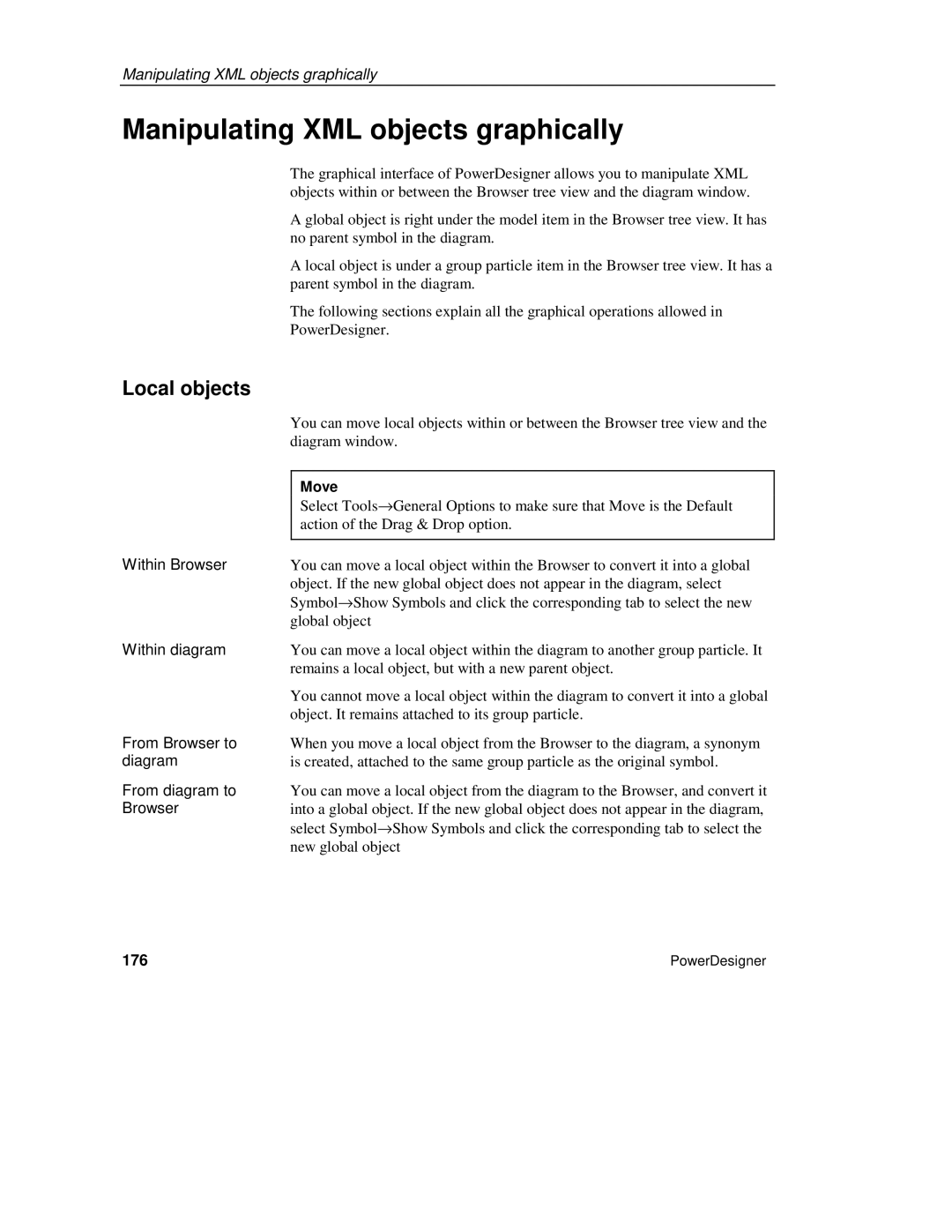Manipulating XML objects graphically
Manipulating XML objects graphically
The graphical interface of PowerDesigner allows you to manipulate XML objects within or between the Browser tree view and the diagram window.
A global object is right under the model item in the Browser tree view. It has no parent symbol in the diagram.
A local object is under a group particle item in the Browser tree view. It has a parent symbol in the diagram.
The following sections explain all the graphical operations allowed in
PowerDesigner.
Local objects
| You can move local objects within or between the Browser tree view and the |
| diagram window. |
|
|
| Move |
| Select Tools→General Options to make sure that Move is the Default |
| action of the Drag & Drop option. |
Within Browser |
|
You can move a local object within the Browser to convert it into a global | |
| object. If the new global object does not appear in the diagram, select |
| Symbol→Show Symbols and click the corresponding tab to select the new |
| global object |
Within diagram | You can move a local object within the diagram to another group particle. It |
| remains a local object, but with a new parent object. |
| You cannot move a local object within the diagram to convert it into a global |
| object. It remains attached to its group particle. |
From Browser to | When you move a local object from the Browser to the diagram, a synonym |
diagram | is created, attached to the same group particle as the original symbol. |
From diagram to | You can move a local object from the diagram to the Browser, and convert it |
Browser | into a global object. If the new global object does not appear in the diagram, |
| select Symbol→Show Symbols and click the corresponding tab to select the |
| new global object |
176 | PowerDesigner |
